Humming Blog |
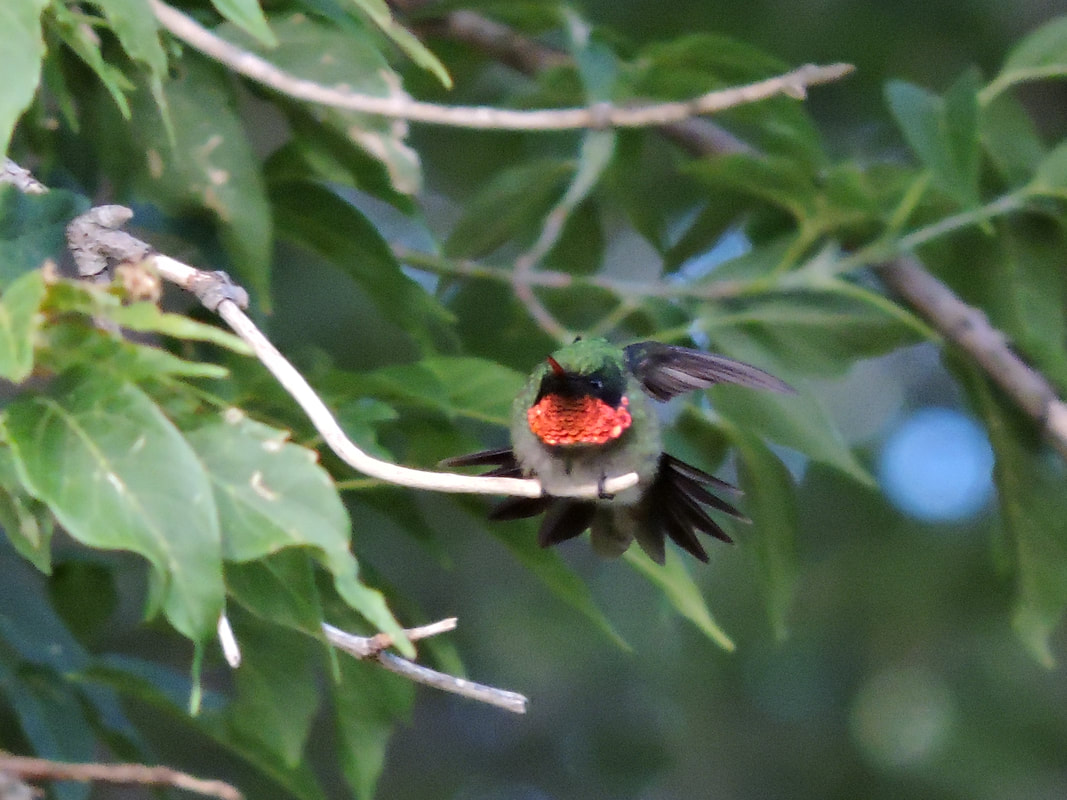 As the mating opportunities start to dwindle, male hummingbirds start to leave their primary territory in search of opportunities elsewhere. They don't forget about favorites, but they start to get a bit bored with the lack of females showing up. Ziggy, our dominant male Ruby-throat has done 2 or 3 hour trips away from home, only to return and find out other males have been intruding. Boredom sneaks in and forces males to search elsewhere, chase other species of birds, and test out their intimidation tactics on other birds as well. As evening approached, Ziggy sat deep in the trees and frequently flashed the red throat as the sun neared the horizon. He still hasn't given up on the mating opportunities, but still has a job to do as he sits high above his garden and watches out for intruding hummingbirds. This yard remains his while he waits for his offspring to arrive in about 20 to 50 days. Not sure he'll be too happy about the number of young that show up and try and take away his feeders, but in the mean time, he waits and watches and protects. June 29, 2018. N.E. of Edmonton, Alberta, Canada. Adult male Ruby-throat hummingbird.
0 Comments
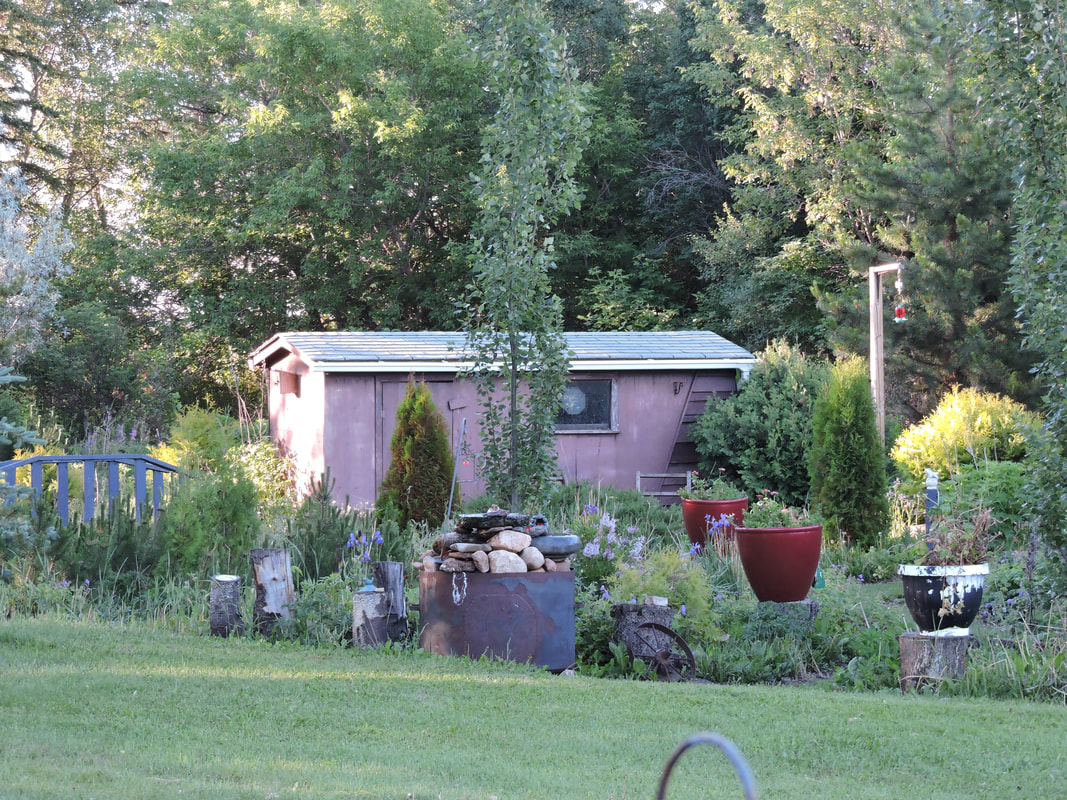 Entrance into the garden at Hummingbird Hideaway Entrance into the garden at Hummingbird Hideaway Things have started to calm down after severe destruction due to weather, but it's just another day in the bird world. Many birds have already completed their first brood, while others have just started building their nests. Many had no choice but to start again because of winds or predators. It was just over a week ago when we spotted a tiny nest in a small cedar globe. Two tiny blue eggs one day, were little red skinned babies the next. The speed at which they grew was remarkable. Their alarming little "cheep" got my attention, and I suspected something was near the nest. I made my way around the trail to find out the nest was empty. I thought there was no way those little bald babies could have left the nest after hatching just over a week ago. The adult Clay-colored sparrows showed their anger towards me while I walked the trail. It wasn't long before I saw a young bird, unable to fly yet, with short wings and tail feathers. I then understood why this particular bird nests so close to the ground, and with only two little mouths to feed it didn't take long to fatten them up. With our power being out for a few days, Ziggy's "Salt Springs Spa" was temporarily shut down. He's no primitive bird. He prefers serious pampering, and average pond water just wasn't gonna cut it. After a few days without special treatment, Ziggy quickly appreciated the good things in life and took advantage of his now functioning spa. There are a few other males that wait in line behind Ziggy, but until the time he completes his legacy, no other males will take advantage of his territory. After fighting off a few trespassers around sunrise, this 6 AM bath was the start of what would be a busy day. Within a couple hours a female showed up. I always question how Ziggy will know if and when a female arrives. This female sat contently with a little tuft of nesting material at the end of her bill. I had no idea that Ziggy sat on an opposing branch only 6 feet away. Within a blink she lunged across the gap towards him. I heard a snap from some kind of contact, and Ziggy quickly initiated his mating dance. A quick 12 inch side to side clicking motion was the display he tried to impress her with. That display then turned into a 20 foot arcing pendulum swing. Ziggy became a little too obsessed with his own display, that she slipped away while he became a little too self absorbed with his flying abilities . It didn't take long before he was back on patrol watching for intruders or ready to put on another display for other arriving females.
That was just a small portion of one day in the birds' world. N.E. of Edmonton, Alberta, Canada. June 18, 2018. 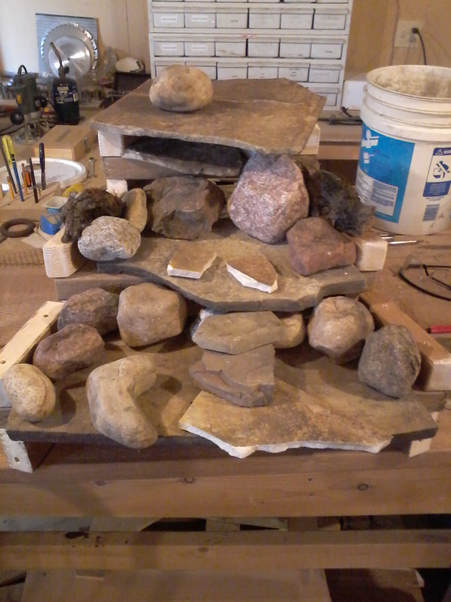 Our pond is well on its way. Actually we had a small pond to start with, but had to be relined due to leaks. Then the waterfall structure was built to suit the pond size. Now the structure is in place at the back of the pond. It looks like a thousand pounds of rocks, but there is a rubber lined wooden structure that takes up a lot of the space. So far we have some rocks in place, but not permanent. A few adjustments have to be made with the direction of the water flow and the water hose, and a little bit of patch work so there aren't any leaks, and then the final assembly. We had a downgrade slope away from our house which made it a bit tricky years back. We had to build it up so that we had a view from the house. It's always great to see the birds bathing from inside the house. They literally come from blocks in all direction to bath and drink. We have a little structure in the middle of the pond, but that may be just temporary. It was supposed to give a bit of moving water until the waterfall was build. Finally some plants are going in to fill gaps. Moss, Buck Bean, Water Calas, Creeping Jenny, Miniature Bull Rushes and Sedum are the main plants to be placed. A couple of these aren't really pond plants, however, we've had incredible success with them as pond plants. All of these are extremely hardy and will survive our COLD winters. Once it's all finished, the water will remain on throughout the season, and we'll wait for the birds to arrive. They already show up to the other water features, but they're definitely taking a look at the new one now. It's already a steady stream of birds that show up every minute of the day for the water, so I can only imagine how many more will be attracted. Something very important to remember is having shallow areas where birds can stand in and bath, or drink. Having a gradual slope in a couple areas of the pond allows them to slowly walk down to the depth they desire. A few touch-ups over the next month or so and plants will be filling in the gaps, and it'll start to look a bit more natural. 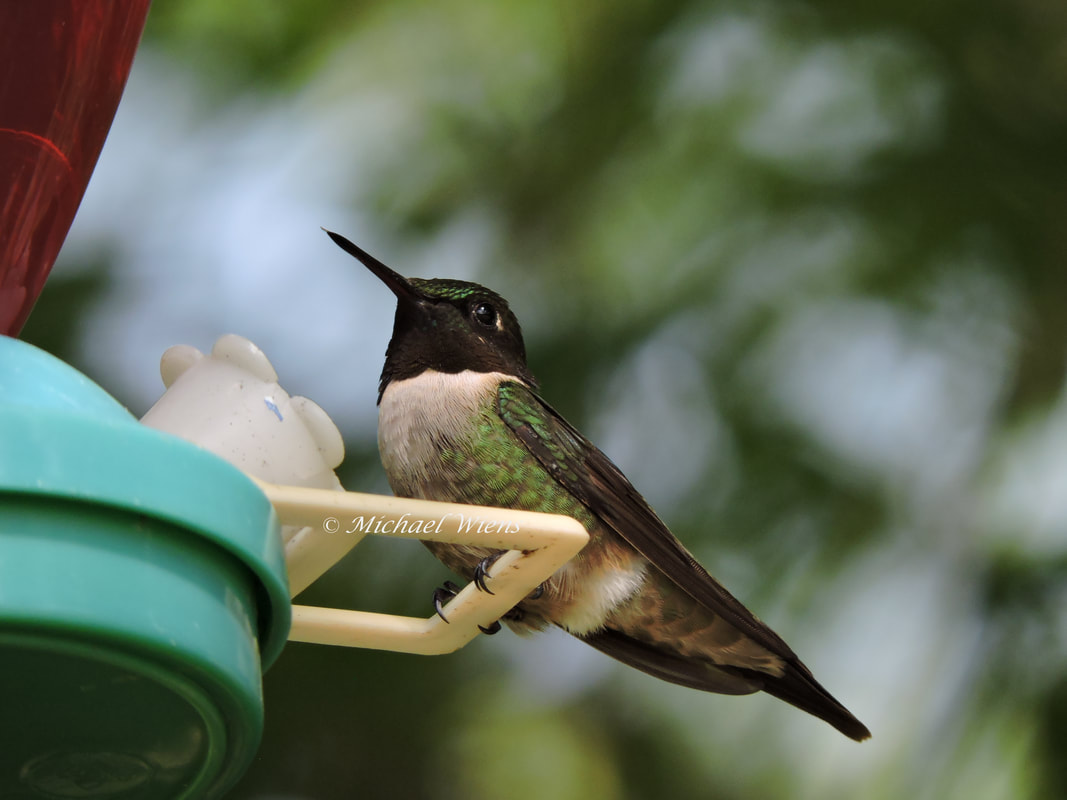 A brilliant laser beam of a metallic red throat lit up as this male Ruby-throat's gorget feathers bee-lined in the direction of the sun. It just so happened my wife and I were right in it's pathway. There can be little more intimidating than having a sharp pointed beak fly right towards your face and then stop abruptly within inches of piercing your eye. With the morning sun just above the horizon, this male's throat glowed like nothing you've ever seen. He did a few pops with his head, and that throat flashed brilliant red. He examined my wife, and then examined myself, and then flew off. Knowing our Ziggy, this bird never showed any similarities in behavior. Ziggy knows us, and as comfortable as he is with us around, he still has that comfort distance rule that he doesn't break. This one was quite intrigued. He was very similar in size and had the brilliant red throat, but no doubt he was an impostor. It didn't take long to read his behavior and patterns. He obviously tried to avoid Ziggy, however, still hadn't solved his tricks. Ziggy knows his territory and has located a perch within view of each one of his feeders. He has to repeatedly move around the garden to maintain a tight security, but he has it all figured out. This male actually came very close to us on several occasions, and gave me several opportunities to get a closeup. Although most male Rubies are extremely hard to tell apart, I like to look at the collar/throat neckline. That bottom line of red gorget feathers are like a DNA test for hummingbirds. Approximately 12 red feathers are laid out in a coded pattern that can be very different from one bird to the next. Some may have a very noticeable lower feather in one or more places within the 12. Some may be higher, some lower, and some in the middle or overlapped, and rarely you get the perfect even patterned throat. This male had the appearance of only 7 large rounded feathers, with a peak of white right under the males beak. The best way to compare the males is to catch them in a relaxed state like this one, when he's simply sitting on a perch with his beak straight ahead. Is it Ziggy? Not a chance. He's an impostor! June 7, 2018. N.E. of Edmonton, Alberta, Canada. Adult Male Ruby-throat hummingbird 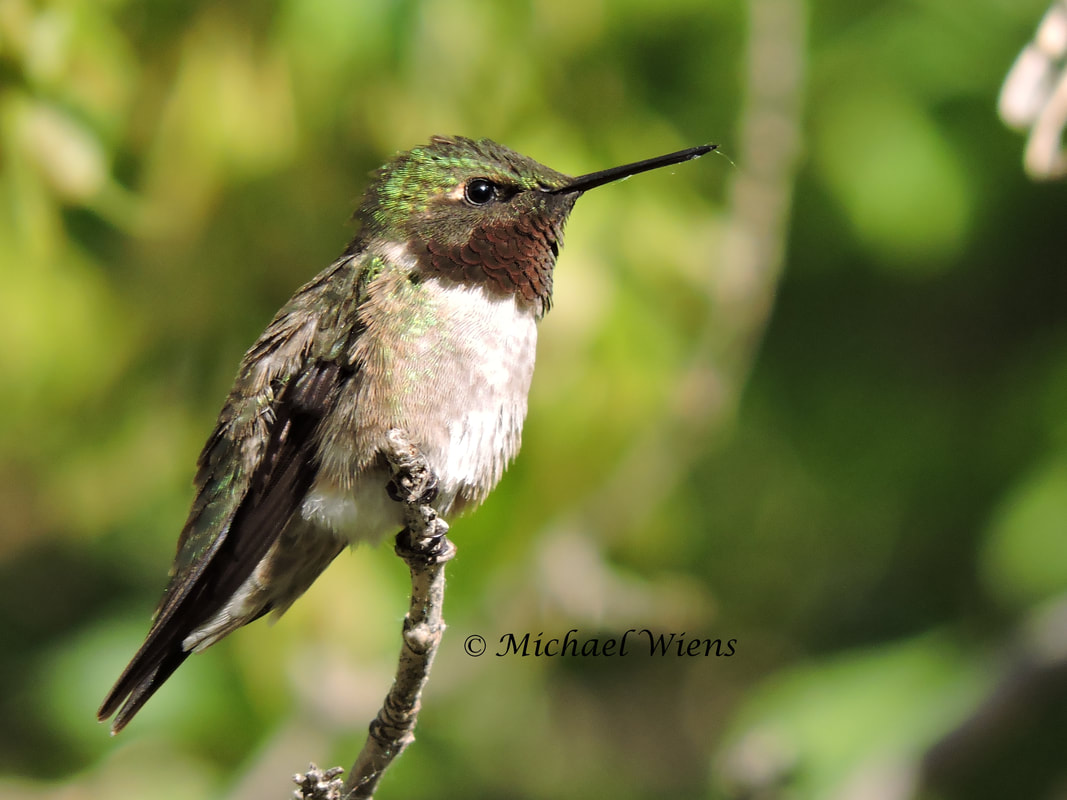 "Hummingbirders" wait for months for their little jewels to arrive, and once they do there's jubilation across the continent. There's a week or two of pure joy, and then things go silent in the garden. Worry and panic strikes every "hummingbirder" out there as it appears their hummingbirds are gone and won't return. Understanding their habits and cycles should give you reason not to be concerned. Let's compare Robins to Hummingbirds for a minute. When Robins appear in your garden and start to build a nest, they don't travel far from their nesting site to get their materials or to find food. Those traveling distances decrease even more once the young hatch and require food. Even though hummingbirds are much smaller and quite a bit angrier than Robins, they still are birds with the same habits. There is one major difference between them though. Male Robins are always very near their mate. Even when she's gathering materials for her nest, the male is somewhere very close watching out for predators. He has a strong protective instinct. With hummingbirds, it's much different. After the initial mating act, the female remains on her own in building the nest and later gathering food for her young. She is the protector, the food gatherer, and the sole caretaker of the nest. The male will protect his territory with the sole purpose of finding as many mates as possible, to increase the population as much as possible. There's no harness on the males. They live the fast and loose lifestyle. The female hummingbird stays relatively close to her nest, just like the Robin. Eggs need to maintain a proper temperature, and if there's danger nearby, she's there to protect. This is the main reason we don't see many female Rubies after that first week or two of the season. They don't travel far when they have vulnerable little ones in the nest. As for the males, you may get a dominant one sticking around, but he also has the freedom to go away for the weekend without any responsibilities to tend to. Sightings can be very sporadic through this time. The females can sit on the nest for about 55 minutes out of every hour, which tells you why they're not in your garden. The consistency starts to form when it's feeding time for the newly hatched young, and as the young get older the frequency of hummingbird visits will increase. Don't lose hope that the hummingbirds are gone from your garden, or that the sightings have decreased. That is very normal, and it's only a matter of time before all the males, females and young will return to your garden to cause a whole lot of chaos. Ziggy, the Ruby-throat hummingbird, hasn't given up on mating opportunities, nor has he given up his throne. He will continue to hang around, and believe that more females will arrive. There are also circumstances where a female loses her nest to a predator and has to start over. The males will remain around for those opportunities as well. May 28, 2018. N.E. of Edmonton, Alberta, Canada. It's very hard to describe just how incredible hummingbirds are until you witness their behaviors, realize the distances they travel in a lifetime, and especially when you get up close and really analyze the precious details of a bird that without it's feathers is about the size of a peanut. Then dress up that peanut with iridescent olive feathers and touch up a few precisely on the throat so that when the light reflects off it, you get a display beyond brilliance. This is one of trillions of miracles that hold a shape with such incredible beauty. Now add cells that continue to know where and how far to grow, tissues to form its shape, and precisely place organs inside this tiny little body that will function with purpose. Add little lenses that are far more powerful than humanly made camera lens. Place a unique character inside this little feathered object, and finally, breath life into it. This little bird is basically one tiny piece of trillions of pieces strategically placed on this planet to make it function with perfection, and yet this tiny bird in itself is made up of trillions of miracles alone.
Here he sits with such beauty. He is filled with a fiery attitude while he fulfills a desperately needed purpose on a planet that continuously exudes miracle after miracle. I hope you can see where I'm going with this. This little bird never willed itself wings, they were masterfully placed by a creator with an imagination so far beyond our imagination. When you start to analyze the details within the details, you will see something far greater than a bird. He has traveled thousands of miles to get to a place he previous knew, and now sits, waits and wonders when the next little miracle will arrive to his territory so he can put on a display and impress her like he has so many others. This is Ziggy. He's a Ruby-throat hummingbird, but not just any bird. May 28, 2018. N.E. of Edmonton, Alberta, Canada. |
Archives
June 2024
Categories
All
|
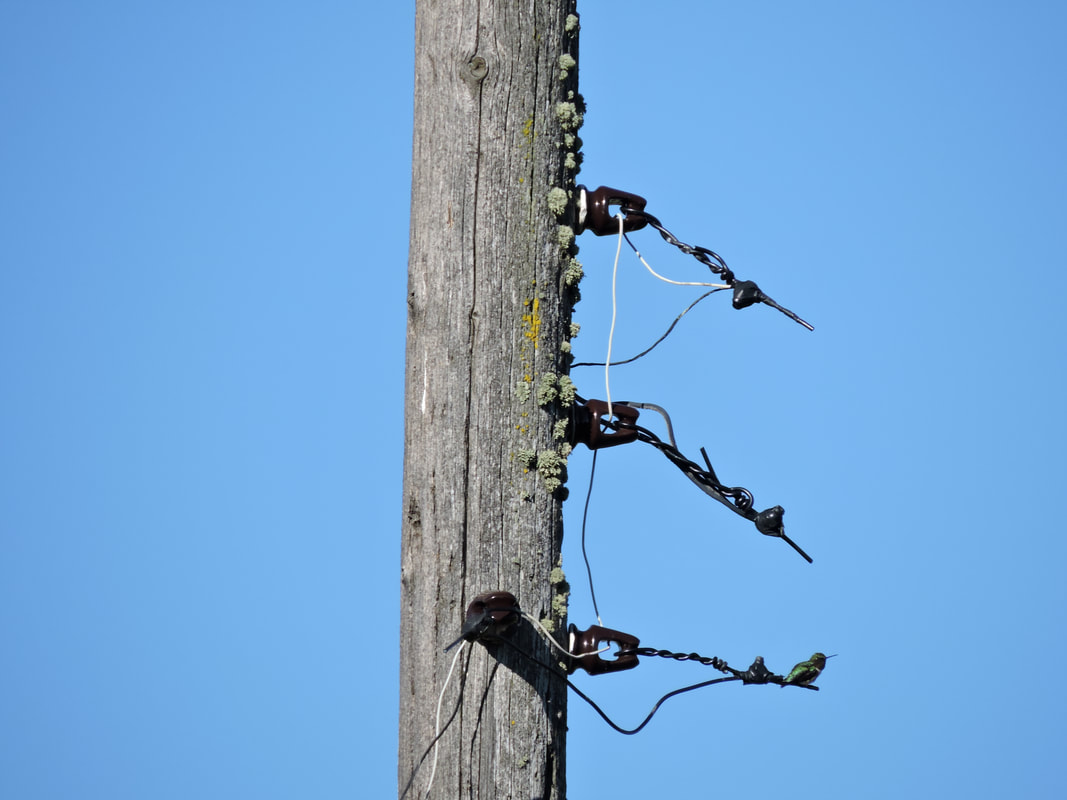
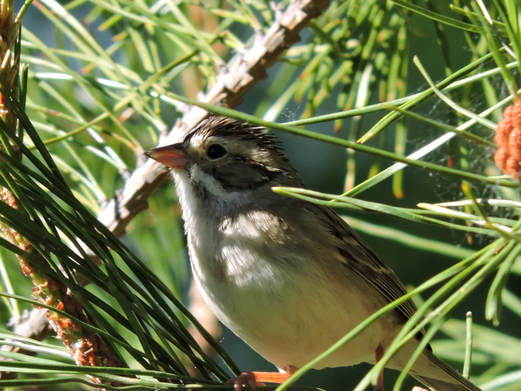
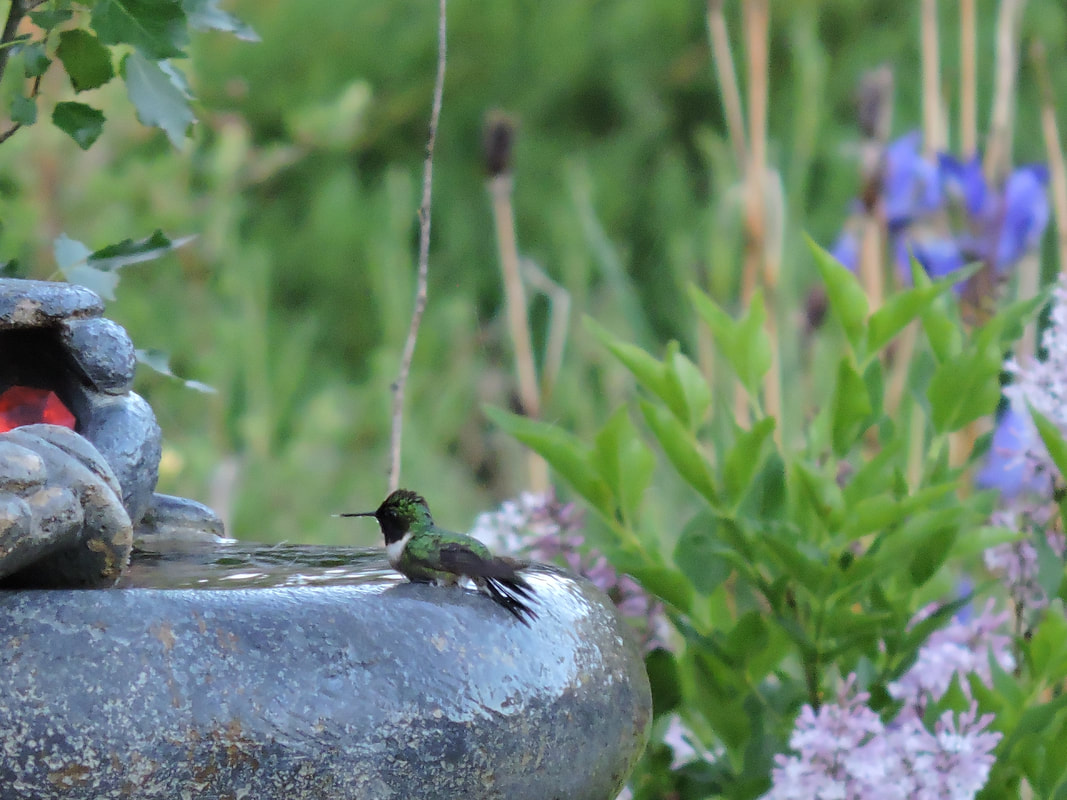
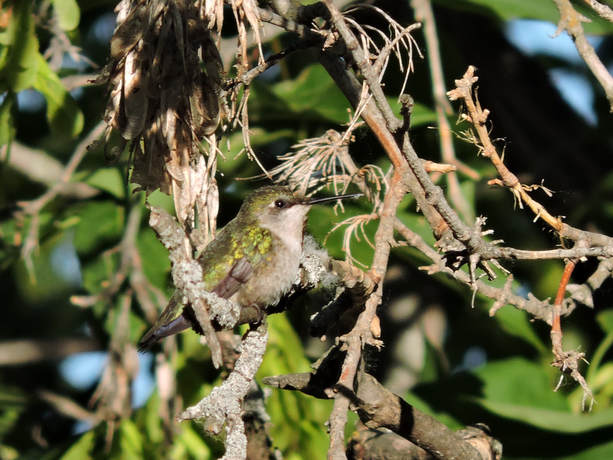
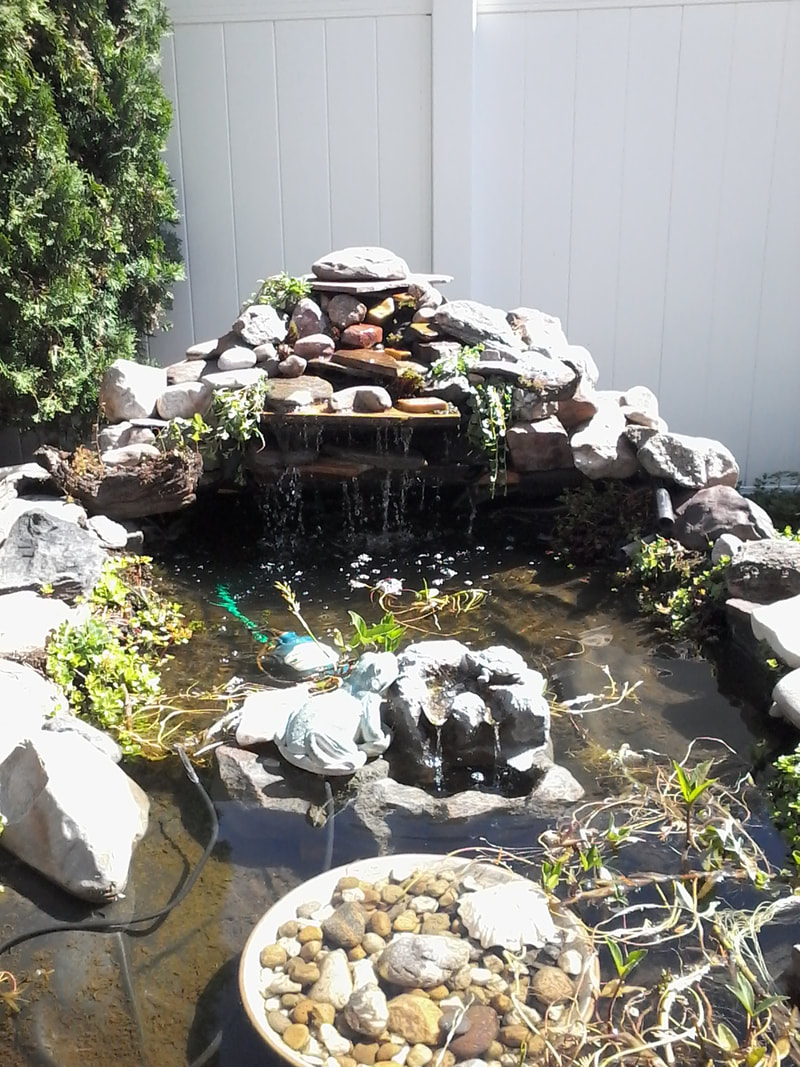
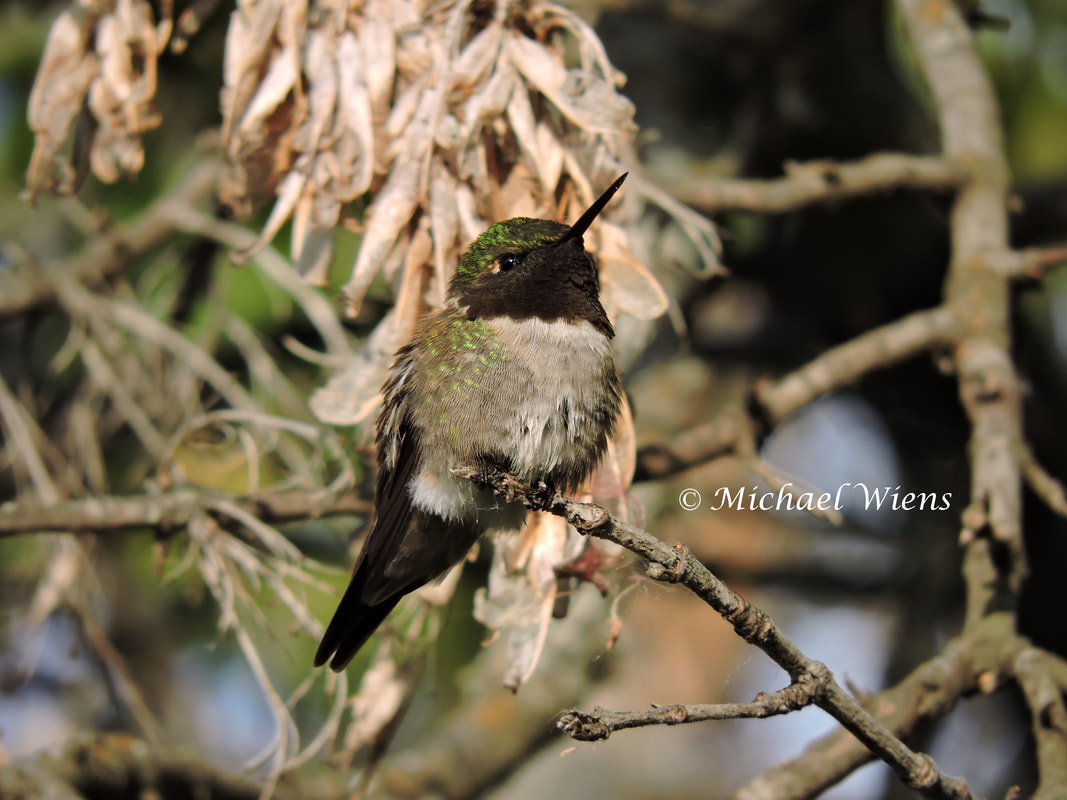
 RSS Feed
RSS Feed
